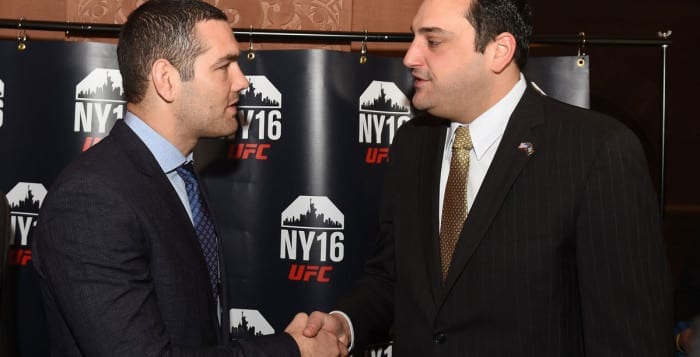What I am about to say may be hard to comprehend, especially for those who have germaphobic tendencies, which would be most of us, but we harbor microorganisms, or microbes (small organisms), in our body that outnumber our cells by a 10-to-1 ratio, even in healthy individuals. There are over one trillion microorganisms in the body.
These organisms make up what is called the microbiome. It includes bacteria, viruses and single-cell eukaryotes. Our relationship to these organisms is complex, spanning from parasitic (detrimental) to commensalistic (one benefits and the other is not affected) to mutualistic (both benefit). The microbiome is found throughout the body, including the skin, the eyes and the gut. Our focus is going to be on the gut since that is where the majority of the microbiome resides.
What is the importance of the gut microbiome? The short answer is it may have a role in diseases — preventing and promoting them. These diseases include obesity, diabetes, irritable bowel syndrome, autoimmune diseases, such as rheumatoid arthritis and Crohn’s, and infectious diseases, such as colitis.
Similar to the Human Genome Project, which mapped our genes, there is a Human Microbiome Project, launched by the National Institutes of Health in 2007, to map out the composition and diversity of these gut organisms. We are still in the early stages of understanding this vast universe of microbes, yet there are some preliminary studies.
What impacts the microbiome? It is affected by drugs, such as antibiotics that can wipe out the diversity in the microbes, at least in the short term, and by lifestyle modifications, such as diet. Microbiome diversity may be significantly different in distinct geographic locations throughout the world. Also, the birth process — vaginal compared to Cesarean section — may have a significant influence on an organisms’ composition. Let’s look at the evidence.
C-sections and reduced breast-feeding
The mode of birth delivery may be important. While C-sections have become more common, they may have a negative impact on the development of gut microbes. In a recent study, infants who were delivered by C-section had a significant reduction in Escherichia-Shigella and a lack of Bacteroides in their guts, compared to those delivered by vaginal birth (1). This effect was seen mostly in elective C-sections, since emergency C-sections may have some vaginal influence. Elective C-sections may reduce exposure to maternal microbes.
Breast-feeding may be beneficial to the gut flora. Those infants who were breastfed had a significantly lower concentration of the bacterium Clostridium difficile, which causes colitis (infection of the colon) and diarrhea. The non-breast-fed infants had higher levels of Peptostreptococcaceae, part of the family of Clostridium bacteria, which as mentioned, relates to colitis. This was a very small study involving 24 healthy infants divided equally between male and female. Of course, consult your OB/GYN before making a decision on the birth process, especially if there are extenuating circumstances that prohibit vaginal birth. Fortunately, breast-feeding is already being encouraged.
Obesity: From mice and men
Obesity can be one of the most frustrating disorders; most obese patients continually struggle to lose weight. Obese and overweight patients now outnumber malnourished individuals worldwide (2).
I know this will not come as a surprise, but we are a nation with a weight problem; about 70 percent of Americans are overweight or obese. For the longest time, the paradigm for weight loss had been that if you ate fewer calories, you would lose weight. However, extreme low-caloric diets did not seem to have a long-term impact. It turns out that our guts, dominated by bacteria, may play important roles in obesity and weight loss, determining whether we gain or lose weight. Let’s look at the data on obesity.
The results from a study involving human twins and mice are fascinating (3). In each pair of human twins, one was obese and the other was lean. Gut bacteria from obese human twins were transplanted into thin mice. The result: The thin mice became obese. However, when the lean human twins’ gut bacteria were transplanted to thin mice, the mice remained thin.
By pairing sets of human twins, one obese and one thin in each set, with mice that were identical to each other and raised in a sterile setting, researchers limited the confounding effects of environment and genetics on weight.
The most intriguing part of the study compared the effects of diet and gut bacteria. When the mice who had received gut transplants from obese twins were provided gut bacteria from thin twins and given fruit- and vegetable-rich (high in fiber), low-fat diet tablets, they lost significant weight. But they only lost weight when on a good diet; there was no impact on obesity if the diet was not high in fiber and low in saturated fat. The authors believe this suggests that an effective diet may alter the microbiome of obese patients, helping them lose weight. These are exciting, but preliminary, results. It is not clear yet which bacteria may be contributing these effects. However, the authors theorize that some gut bacteria may have a protective effect against weight gain with a high fiber, low saturated fat diet.
This suggests that the diversity of gut bacteria may be a crucial piece of the weight-loss puzzle.
Rheumatoid arthritis
Rheumatoid arthritis (RA) is an autoimmune disease that can be disabling, with patients typically suffering from significant morning stiffness and joint soreness. What if gut bacteria influenced RA risk? In a recent study, the gut bacteria in mice that were made susceptible to RA by deletion of certain genes (HLA-DR genes) were compared to those who were more resistant to developing RA (4). Researchers found that the RA-susceptible mice had a predominance of Clostridium bacteria and that those resistant to RA were dominated by bacteria of the Bifidobacterium genus and the Porphyromonadaceae family. The significance is that the RA-resistant mice bacteria are known for their anti-inflammatory effects.
Although nobody can say what the ideal gut bacteria should consist of, and the research is still evolving when it comes to the microbiome, there are potential ways of influencing this milieu, especially in our gut. While C-sections definitely have their place, vaginal deliveries may be more beneficial to the infants’ gut bacteria than elective C-sections.
Diet composition seems to be important to the composition and diversity of gut bacteria, impacting the development or prevention of diseases, such as obesity and rheumatoid arthritis.
References: (1) CMAJ. 2013;185:373-374. (2) “The Evolution of Obesity”; Johns Hopkins University Press; 2009. (3) Science. 2013;341:1241214. (4) PLoS One. 2012;7:e36095.
Dr. Dunaief is a speaker, author and local lifestyle medicine physician focusing on the integration of medicine, nutrition, fitness and stress management. For further information, go to the website www.medicalcompassmd.com or consult your personal physician.















